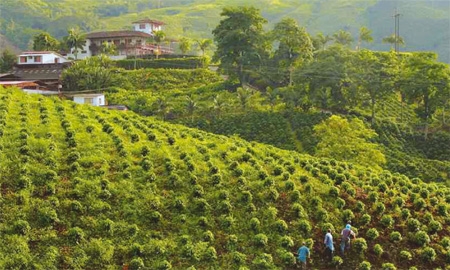Demand for consumer-oriented agricultural products, such as fresh and processed fruit, vegetables, beer, red meat, and fresh and frozen pork, has been on the rise in Colombia over the past two decades. This has been driven by two main factors: ongoing appreciation of the currency, which has increased purchasing power, and sustained economic growth. Strong foreign direct investment is also expected to continue in Colombia, which bodes well for both the currency and imports. The country’s primary crops, including coffee, cut flowers, bananas, rice, tobacco, corn, and oilseed, continue to perform well.
Colombia is also leveraging its current position as the third-largest palm producer in the Americas. According to Jens Mesa Dishington, President of the Colombian plantation owners’ association, Fedepalma, the palm industry is one of the country’s most dynamic. Moreover, national agriculture companies such as Team Food,
Mayagüez, Manuelita, Colombina, and Harinera del Valle remain committed to socially responsible growth, employment, and to their role as drivers of the Colombian economy.
One of the country’s foremost departments is the Cauca Valley. Located in the west, it is the Pacific Door of Colombia, home to the country’s largest seaport and an agricultural powerhouse. This region is the country’s second-largest producer of sugar cane, and it produces almost 9% of total domestic coffee production.
But the sector is not without its challenges. In August and September 2013, the country was immersed in tense protests against the government’s agricultural policies, tension which took the shape of an agrarian strike by a broad coalition comprising the farming industry, labor unions, and much of the country’s rural population.
Through dialogue, however, progress was made in the form of the Grand National Pact for the Agricultural Sector and Rural Development, announced several weeks after the unrest began. Colombian President Juan Manuel Santos said the pact “would convert the agricultural sector into a center of prosperity”. He added that it would also provide a platform where the government, farmers, peasants and indigenous tribes could work together on a collaboration that will lead to “a truly agricultural, modern and fair policy that looks toward the future”.
Rubén Darío Lizarralde, Colombia’s Minister for Agriculture, highlighted the importance that the pact should address both microeconomic and macroeconomic rural needs, noting that the ministry was actively “collecting guidelines, projects, critiques and recommendations to build a true state policy for the agricultural sector”.
| Banco Agrario reaches out to provide loans to small and medium-sized farmers who would otherwise not have access to funding |
When tensions flared again recently, Mr. Santos met with sector representatives and the two sides agreed on a set of measures, including providing farmers with credit cards with special conditions, easier access to loans, and raising prices for their products. A commission will also be created to regulate fertilizer, insecticide and seed prices.
Although the situation is not entirely resolved, both sides are working together to find a solution, and the government has proven especially dedicated to returning the sector to a path of growth.
Climate change is perhaps the biggest risk factor Colombia’s agriculture sector faces. In 2010, the La Niña phenomenon battered 60% of its territory, flooding more than 800,000 hectares, causing damages in excess of US$12 million and affecting more than 2.5 million people. The prolonged and intense rainy season led the government to declare an economic, social and ecological emergency and a nationwide national disaster that year.
But since La Ñiña, the Ministry of Agriculture and Rural Development has taken the bull by the horns, investing heavily to ensure end-to-end, multi-crop, multi-regional adaptations. It has teamed up with the International Center for Tropical Agriculture to implement important initiatives.
The country has exhaustively identified the climate change challenges it faces, allowing it to prioritize adaptation measures according to risk. Moreover, farmers have worked side-by-side with the government in this process, which will foster implementation and increase the success rate. Measures include new farming technology, greater crop variety, and the use of area-specific management techniques and low-carbon production systems which use minimal water. These methods and models can be exported to other Latin American countries, making Colombia a true pioneer in this area.
Another way the government is working for the agriculture sector is through the agricultural bank,
Banco Agrario. According to the bank’s President, Álvaro Miguel Navas Patrón, the Food and Agriculture Organization of the United Nations ranks Colombia among the top eight economies in terms of agricultural and agro-industrial development. And, since its creation in 1999, Banco Agrario has endeavored to further sector development in every way possible.
“Firstly, we reach parts of Colombia that other banks don’t, which means we are able to serve even the most rural of populations,” says Mr. Navas Patrón. “Secondly, we play a vital role in that we provide loans to small- and mid-sized farmers, who would never be able to access funding if not for us.”
The Colombian government has proven adept at taking advantage of its assets and agile in confronting its obstacles. As a result, the country is proving resilient and capable of guiding its agricultural sector, an important source of wealth and employment, towards further growth.

0 COMMENTS